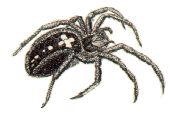Pajek datasets: ESNA 3 networks
from the book Wouter De Nooy, Andrej Mrvar, Vladimir Batagelj: Exploratory Social Network Analysis with Pajek; Revised and Expanded Third Edition for Updated Software. CUP, 2018.
Creative Commons Attribution-NonCommercial-ShareAlike 4.0 License
World trade in miscellaneous manufactures of metal, 1994
Dataset
World_trade
Description
- world.net: world map contours as network
- imports_manufactures.net: 80 vertices, 1,000 arcs, no edges, no loops, line values show the value of imports in 1,000 US$.
- continent.clu: the countries' continents (1 - Africa, 2 - Asia, 3 - Europe, 4 - North America, 5 - Oceania, 6 - South America).
- world_system.clu: the countries' structural world system positions in 1994 (1 - core, 2 - semiperiphery, 3 - periphery).
- world_system_1980.clu: the countries' world system positions in 1980 according to Smith and White (see reference below; (1 -core, 2 - strong semiperiphery, 3 - weak semiperiphery, 4 - periphery). GDP_1995.vec: the countries' Gross Domestic Product per capita in US$ in 1995.
- world_trade.paj: Pajek project file containing all data listed above.
- gdp_1995.vec: the countries' Gross Domestic Product per capita in US$ in 1995.
- population_1995.vec: population in 1995.
- x_coordinates.vec, y_coordinates.vec: geographical coordinates of countries.
Download
complete dataset (ZIP, 59KB); World trade 94 DB (Access, 376KB)
Background
The files contain data on trade miscellaneous manufactures of metal among 80 countries in 1994. All countries with entries in the paper version of the Commodity Trade Statistics published by the United Nations were included, but for some countries, the 1993 data (Austria, Seychelles, Bangladesh, Croatia, and Barbados) or 1995 data (South Africa and Ecuador) were used because they were not available for 1994. Countries which are not sovereign are excluded because additional economic data were not available: Faeroe Islands and Greenland, which belong to Denmark, and Macau (Portugal). Most missing countries are located in central Africa and the Middle East or belong to the former USSR. The arcs represent imports by one country from another for the class of commodities designated as 'miscellaneous manufactures of metal', which represents high technology products or heavy manufacture. The absolute value of imports (in 1,000 US$) is used but imports with values less than 1% of the country's total imports were omitted.
In addition, several attributes of the countries were coded: their continent, their structural world-system position in 1994, their world system position in 1980 according to a previous analysis by Smith and White - see the reference below - and their Gross Domestic Product per capita in US$ in 1995 (Statistical Yearbook of the United Nations).
References
- D.A. Smith and D.R. White, 'Structure and Dynamics of the Global Economy - Network Analysis of International-Trade 1965-1980'. In: Social Forces, vol. 70 (1002), p. 857-893.
- United Nations, Statistical Papers. Commodity Trade Statistics (Series D Vol. XLIV, No. 1-34 (1994)).
- United Nations, Statistical Yearbook of the United Nations (Ed. 43, IVATION Datasystems Inc.) for additional economic and demographic data.
- W. de Nooy, A. Mrvar, & V. Batagelj, Exploratory Social Network Analysis with Pajek (Cambridge: Cambridge University Press, 2004), Chapter 2.
History
Original author: Wouter de Nooy (denooy@fhk.eur.nl). Data collected and translated into Pajek data files by W. de Nooy, 2001.
